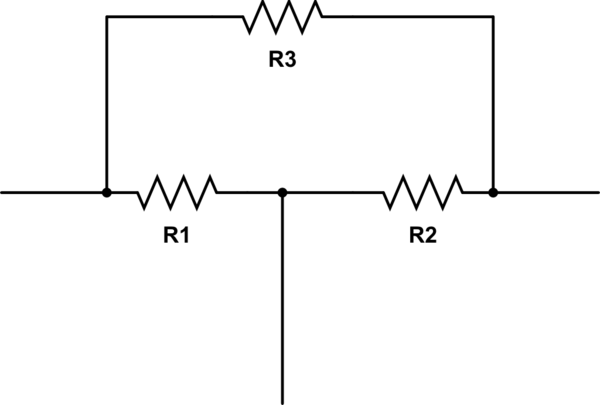Given the following posistions of resistors as a part of a bigger circuit, how can I simplify it? The wire between R1 and R2 is a short as I am using Thevenin's theorem. I've tried to make R1 and R2 and R3 parallel but the answer for the whole circuit doesn't match with the answer that comes on when i simulate it on circuit maker! HELP

simulate this circuit – Schematic created using CircuitLab
